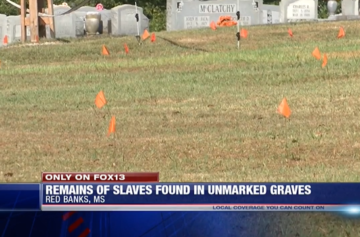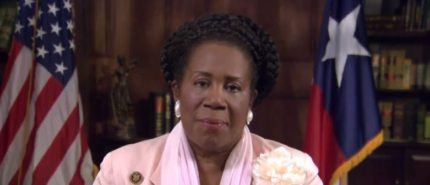
Columbia University
What happens when a university has to reckon with its own history with slavery? Since 2003, when Brown University decided to delve into its history with slavery, every Ivy League institution has been forced — willingly or not — to roll out the beginning stages of documenting its messy history with the once prescribed “peculiar institution.”
In 2014, Columbia University decided to self-examine its involvement with the transatlantic slave trade and anti-slavery movements. By that time, other Ivy League schools like Yale and Harvard also were reviewing their history with a faculty- and historian-led approach. Columbia decided to upend that process by giving its students a lead role in unearthing the history of the school’s connection to slavery.
“I think the Columbia project is really distinguished by its student-centered nature,” says Thai Jones, Columbia’s curator for American history and director of the 2016 Columbia and Slavery seminar cohort. “The other university projects had some student involvement but definitely had some independent faculty research.”
Last month, Columbia published the first in what will be an evolving preliminary report summarizing its connection to the slave and anti-slavery movements, drawing on student-led research over the past two years. “The model we’ve chosen is to have students researching widely,” Jones says, to ensure “more research capacity to investigate” a broader set of questions.
“From the outset, slavery was intertwined with the life of the college,” the preliminary report reads. “Of the 10 men who served as presidents of King’s and Columbia between 1754 and the end of the Civil War, at least half owned slaves at one point in their lives. So did the first four treasurers.”
The most glaring connection between King’s College, as Columbia was known before the Civil War, was the campus’s proximity to Wall and Pearl streets, the slave trading center of New York City in the 18th and 19th centuries. Thus, many of the original donors of the institution “had a connection to slavery via ownership or trade,” states the report.
Two campus relocations in its 250-year history meant that, as the report says, student researchers found it hard to find “records of the experience of individual(s) enslaved who were owned by affiliates of King’s and Columbia College.”
One of the few Black researchers were able to locate on campus was Joe, a slave of George Washington’s stepson, John Parke Custis, who lived in the dorm with John working as a housekeeper, servant and personal messenger between John in New York and his parents in Monticello.
Iconic historian and Columbia professor Eric Foner decided to flip the research approach of other elite institutions on its head by training the inaugural cohort of undergraduates to investigate the institution to which they would forever be linked. Under the guidance of faculty and other trained researchers, students led the investigations into Columbia and its ties to slavery.
“The real best-case scenario for this project, if it were to succeed to my highest vision for it, would be a student body that is mobilized to not just learn this story but to be activated by it,” Jones says. “Having students do the the work is crucial to that. I don’t think that a faculty-created report would galvanize students in the same way.”
Still, the project struggled to strike a public/private balance for the resulting research. “There was always a tension between creating private research projects not intended for public consumption,” he continues, “with the fact that this was a public-facing, public history project” that would eventually be put on the website along with other relevant primary and secondary on the subject.
Jones believes that the actual discovery of the historical connections is only one important part of the project. He recognizes that the Columbia project is historical in nature but also a political endeavor.
“The students who have done this research have been incredibly inspired, motivated and sometimes traumatized by what they found,” he says. “And, they have taken their concerns to the larger student body.”
All of Jones’ students have gone on to pursue slavery research in some capacity since taking the seminar. “The most important thing for the seminar was to create students who were trained and empowered in critical research skills” related to slavery, he says.
Many of his students’ main goal was to find evidence of the experience of the enslave on campus and to locate Black people as servants, slaves or, perhaps, labor used to construct university facilities. They quickly discovered that there were no inventories or lists, largely because those were the kind of records that weren’t kept in the first place. But, there was one student project that was able to make direct connections between Columbia students and slavery.
Before the Civil War, when an enslaved person would run away, the owner would place an ad in the paper of the day in hopes of having their property returned. Jordan Brewington, one of Jones’ students, scoured every digitized fugitive slave advertisement in New York City to discover Columbia’s connections to enslaved Black people.
“Jordan searched and cross-referenced every Columbia affiliate — student, faculty, trustee — with the terms “fugitive” and “slave” for the entire 18th century, starting in 1760 when King’s College is founded” Jones says. “We thought that maybe she would find three examples. I warned her to moderate her expectations, but she found dozens of these advertisements, including ads where one student had sold a slave to another student, and “ads of the same person that had run away multiple times from different Columbia affiliates.”
These slave ads had detailed descriptions of known injuries of the escaped enslaved as identifiers for people to be on the look out for. The ads were sometimes unintentional testaments to the skills gained by the enslaved Africans. According to the advertisements, many spoke multiple languages and were craftsmen. The ads were an incredibly complicated set of data that spoke to the involvement of Columbia personnel — including students — in slavery.
New York City — and by extension King’s College — has always had a complex relationship with slavery and the South. The city contained the second-largest population of enslaved people outside of Charleston, S.C., for much of the 18th century and King’s College was located in a part of town especially associated with Black residents.
New York merchants, who were likely to be King’s College graduates, were involved in the cotton trade and in sending farm implements or clothing to the South. “King’s College people were involved in every aspect of slavery and there is not one part” that they weren’t involved in, Jones says. “Many, many Columbia people owned a few slaves and a few of them owned many slaves.”
Much of the debate and journalism written around university-related slavery has centered on whether it is sensible to cover up or replace building names and monuments that have been erected to honor slave owners on the campus. At Georgetown, students have successfully persuaded the administration to rename two buildings named for slave owners. When asked by Columbia University President Bollinger if they thought building names should be changed, students in his seminar were more interested in erecting markers that expose the history of the slaveholder.
“They had a very complex and interesting answer: If you change a building name, you are, in effect, erasing the history of racism and covering over a whole century or so of bias.”


